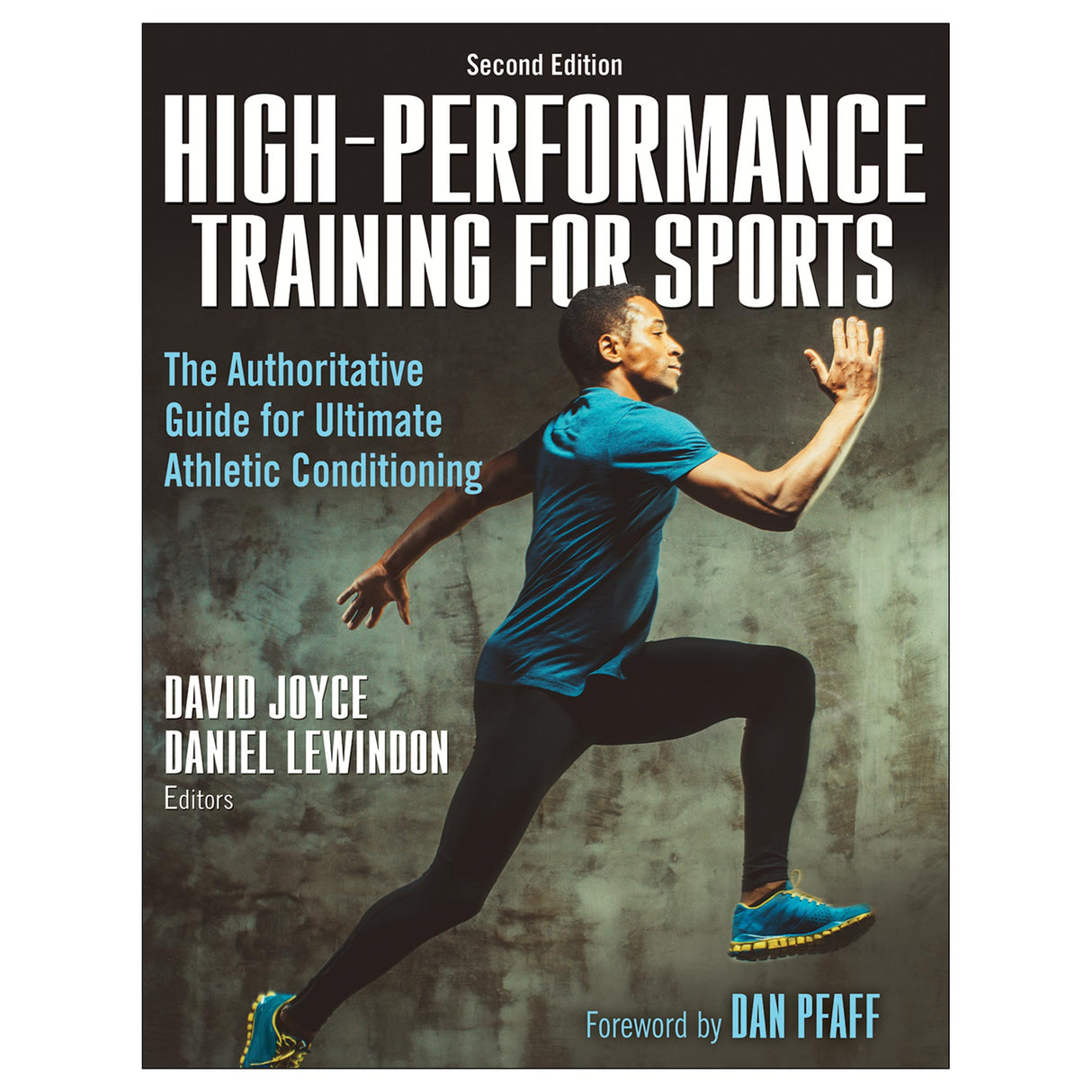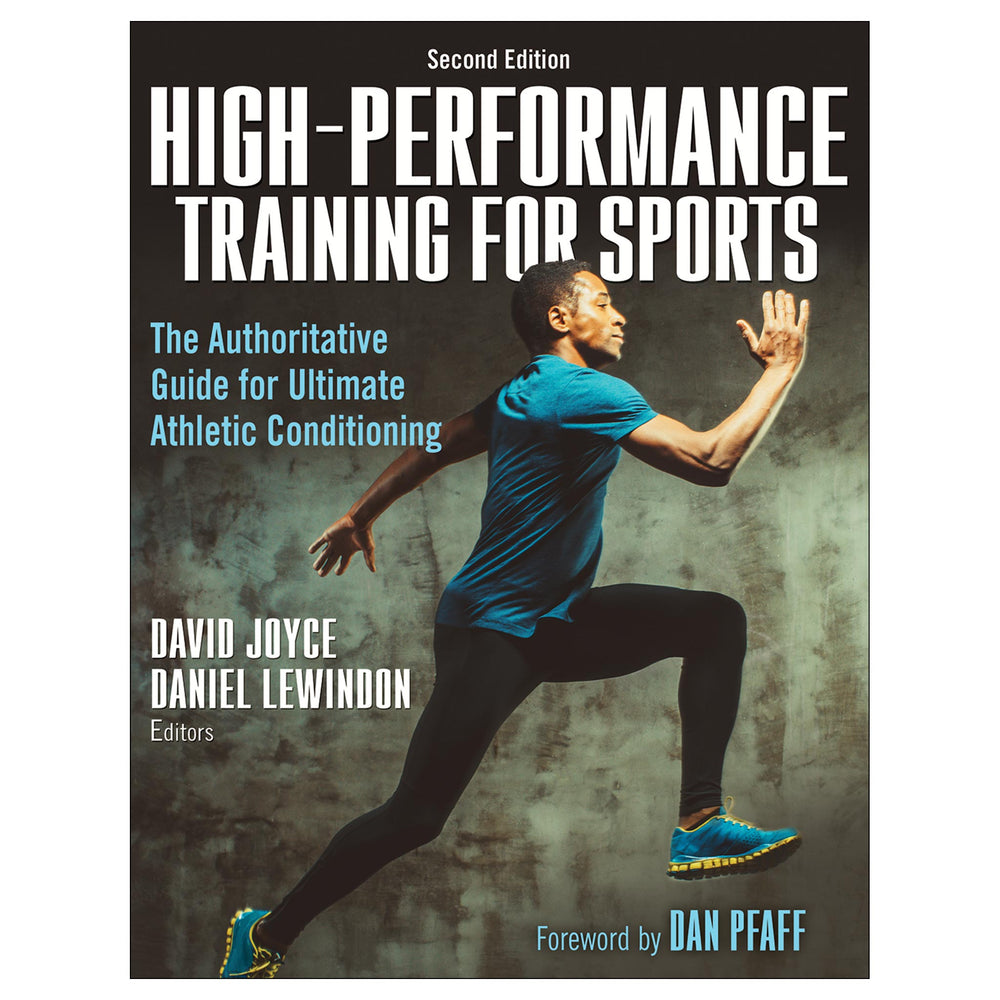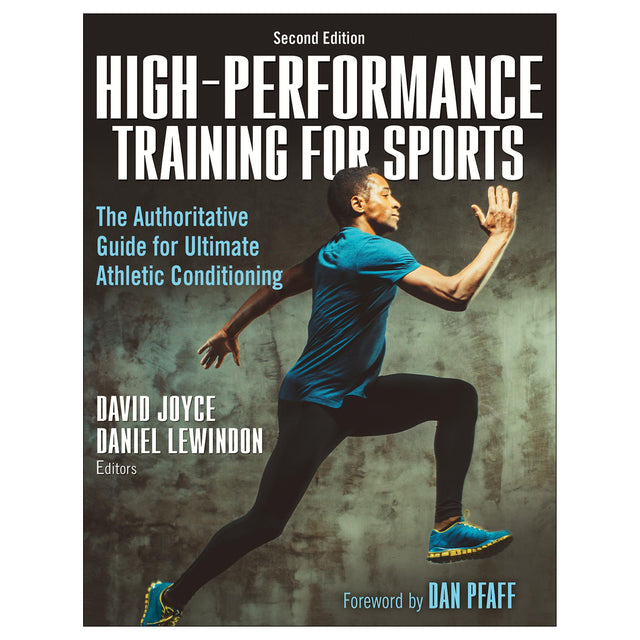High-Performance Training for Sports-2nd Edition
Author: David Joyce, Daniel Lewindon
$44.95 USD
High-Performance Training for Sports changed the landscape of athletic conditioning and sports performance when first published in 2014. Now the second edition builds on that groundbreaking work with the latest and most effective philosophies, protocols, and programs for developing today’s athletes.
High-Performance Training for Sports, Second Edition, features contributions from global leaders in athletic performance training, coaching, and rehabilitation. This all-star team shares the cutting-edge knowledge and techniques they’ve used with Olympians, elite athletes, and teams from professional sport leagues around the world. In addition to fostering athletes’ speed, agility, jumping and landing capabilities, and anaerobic and aerobic conditioning, you’ll find six new chapters on programming for the in-season and off-season, learning and cueing, and having a positive impact on a training environment.
Combining the latest science and research with proven training protocols, High-Performance Training for Sports will help you accomplish three critical goals for your athletes:
- Establish and develop resilience
- Cultivate athletic capabilities
- Enhance and sustain performance
Whether you are seeking to maximize the readiness of high-performance athletes for a season or are assisting athletes who are returning to play after injury, this definitive guide provides the best advice and practices. High-Performance Training for Sports is an essential resource for those who wish to excel as a strength and conditioning coach, trainer, rehabilitator, or athlete.
Earn continuing education credits/units! A continuing education exam that uses this book is also available. It may be purchased separately or as part of a package that includes both the book and exam.
Audience
Strength and conditioning coaches, sports performance training coaches and sports physiotherapists, and athletic trainers and sport rehabilitation specialists.Introduction: Understanding Modern Athletes
David Joyce and Daniel Lewindon
Part I. Establishing and Developing Resilience
Chapter 1. Understanding Athletes’ Capacity and Readiness
Michael R. McGuigan, PhD, CSCS*D, and Jo Clubb
Chapter 2. Working With Younger Athletes
Rhodri S. Lloyd, PhD, Jon L. Oliver, PhD, and Sean P. Cumming, PhD
Chapter 3. Promoting Mental Health
Samuel Cumming, Susan Wood, and James Bell
Chapter 4. Optimising Movement Efficiency
Matt Jordan, PhD, CSCS
Chapter 5. Developing Trunk Strength and Coordination
Loren Landow
Chapter 6. Gaining Flexibility for Strength and Performance
Vernon C. Griffith II, CSCS*D, TSAC-F*D
Chapter 7. Fuelling for Training and Performance
Dan Ellis and Graeme L. Close
Chapter 8. Monitoring Fitness and Performance
Stuart Cormack, PhD, and Aaron J. Coutts, PhD
Part II. Developing Athletic Capabilities
Chapter 9. Impacting a Training Environment Positively
Brett Bartholomew
Chapter 10. Strength Training
Eamonn P. Flanagan, PhD
Chapter 11. Speed Training
Jean-Benoit Morin and Stuart McMillan
Chapter 12. Jumping and Landing Training
Jeremy M. Sheppard, PhD, and Dana Agar-Newman, MSc
Chapter 13. Agility Training
Sophia Nimphius, PhD
Chapter 14. Anaerobic Power Training
David T. Martin, PhD
Chapter 15. Aerobic Power Training
Martin Buchheit and Paul Laursen
Chapter 16. Cueing for Training and Performance
Nick Winkelman, PhD
Chapter 17. Translating Athletic Qualities Into Sport Performance
Duncan N. French
Chapter 18. Managing Mental and Physical Stressors
John Kiely
Part III. Enhancing and Sustaining Performance
Chapter 19. Program Design
Benjamin Rosenblatt, ASCC
Chapter 20. Preseason
Darren Burgess
Chapter 21. In-Season
Darcy Norman, PT, ATC, CSCS
Chapter 22. Off-Season
Teena Murray and Derek M. Hansen
Chapter 23. Warm-Up and Cool-Down
Rett Larson
Chapter 24. Peaking
G. Gregory Haff, PhD, CSCS*D, FNSCA, AWF-3, ASCC, ASCA-2
Chapter 25. Recovery
Shona L. Halson, PhD, and Lorena Torres-Ronda, PhD
Chapter 26. Learning
Sam Robertson, PhD, and Jacqueline Tran, PhD
Chapter 27. Retraining the Injured Athlete
David Joyce, MSc, MBA, and Daniel Lewindon, MSc
—Rob Pacey, Host of the Pacey Performance Podcast
"David and Daniel have again produced a must-have resource for anyone interested in high-performance sport. The level of contributors within this work is outstanding. It will definitely have a place on my bookshelf."
—Dr. Adam Beard, Director of High Performance for the Chicago Cubs
“High-Performance Training for Sports is this generation's Supertraining."
—Dr. Nick Winkelman, Author of The Language of Coaching





